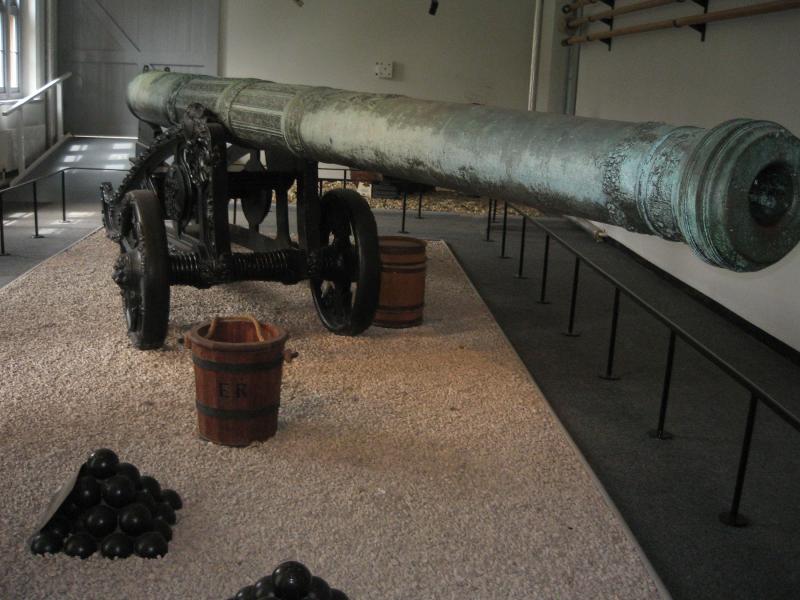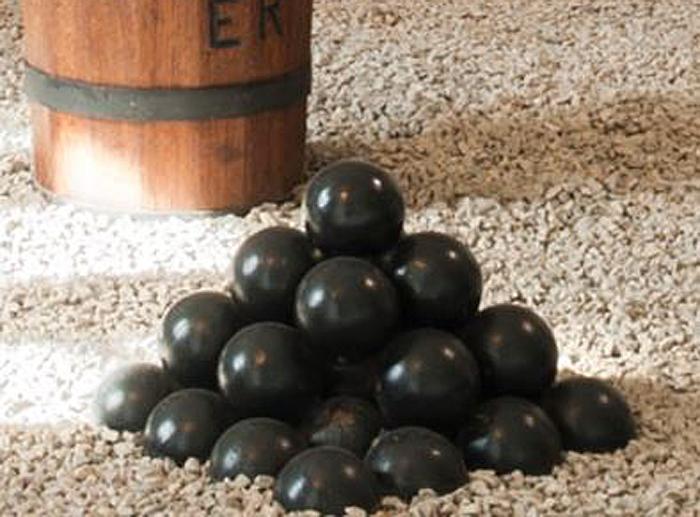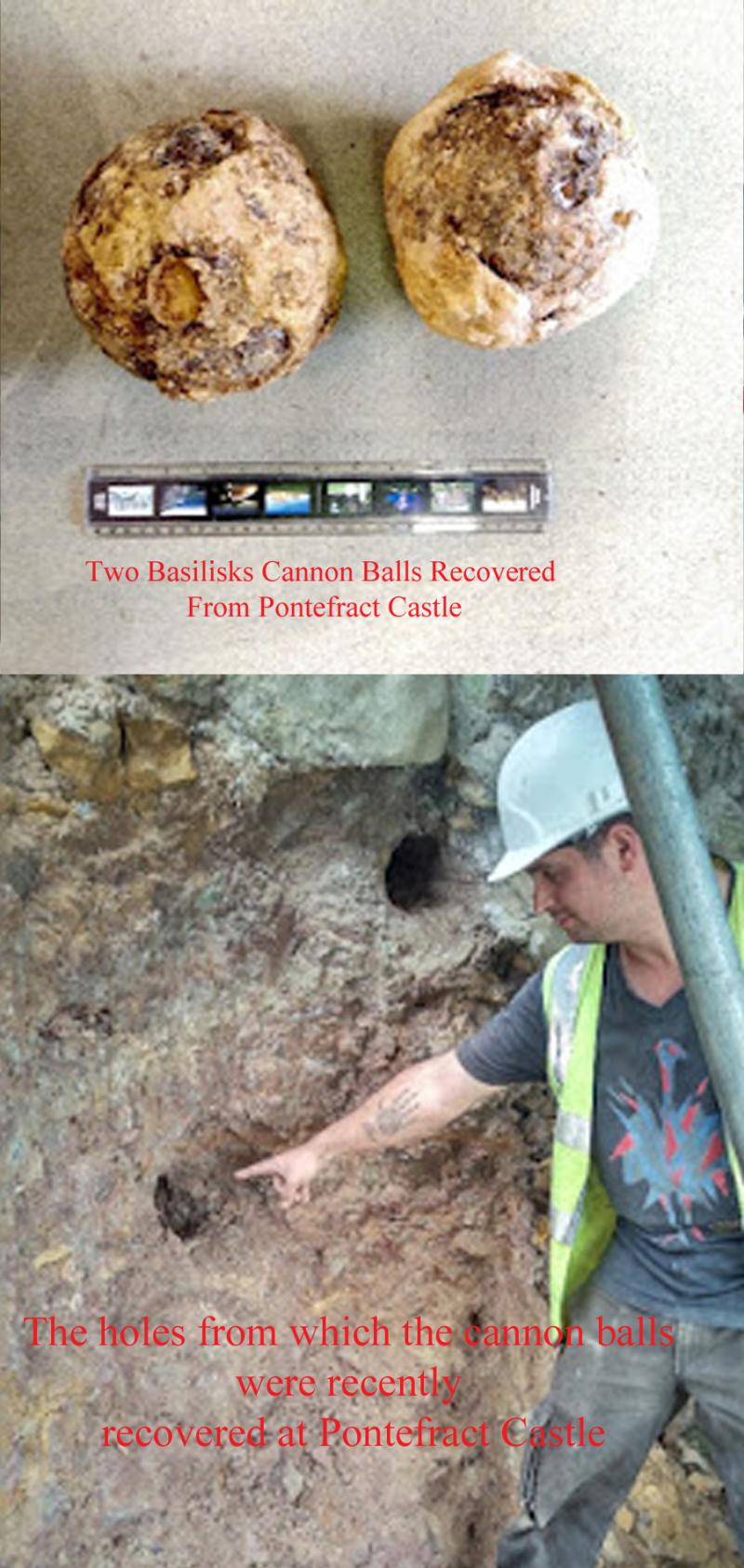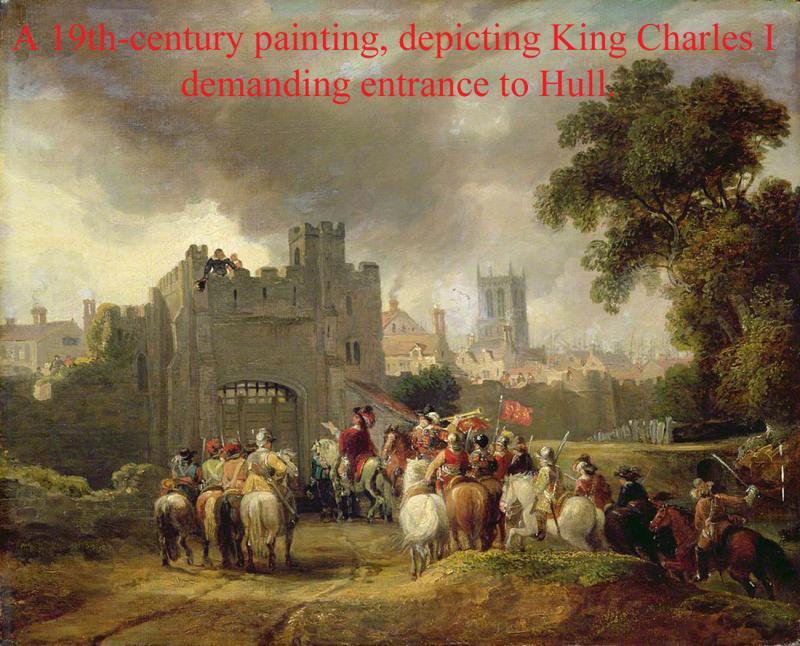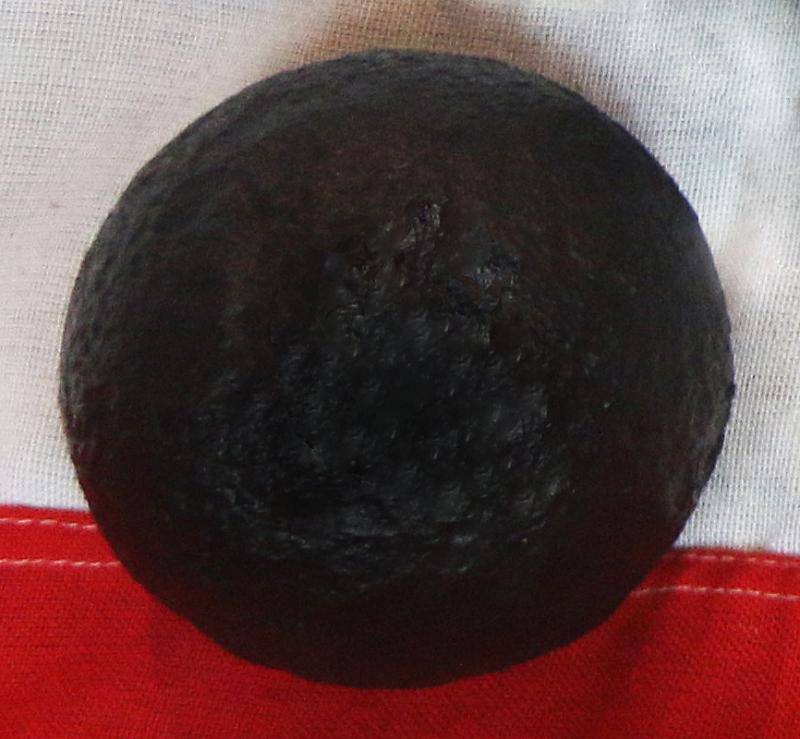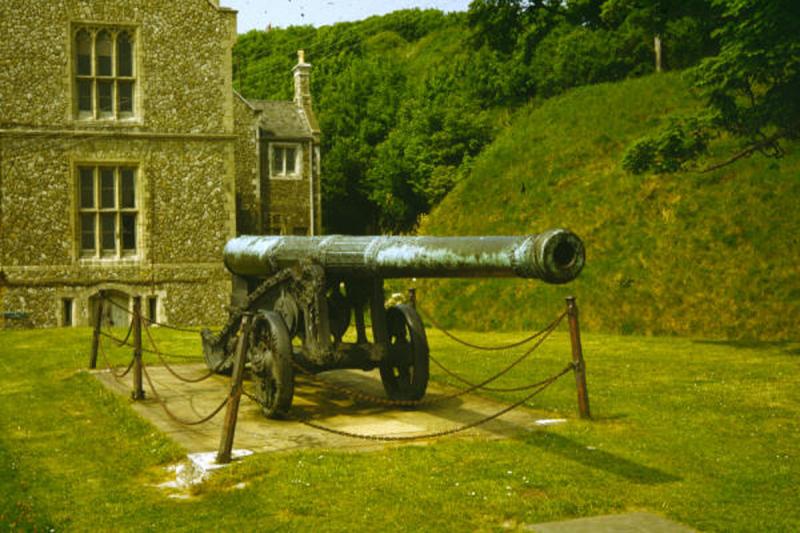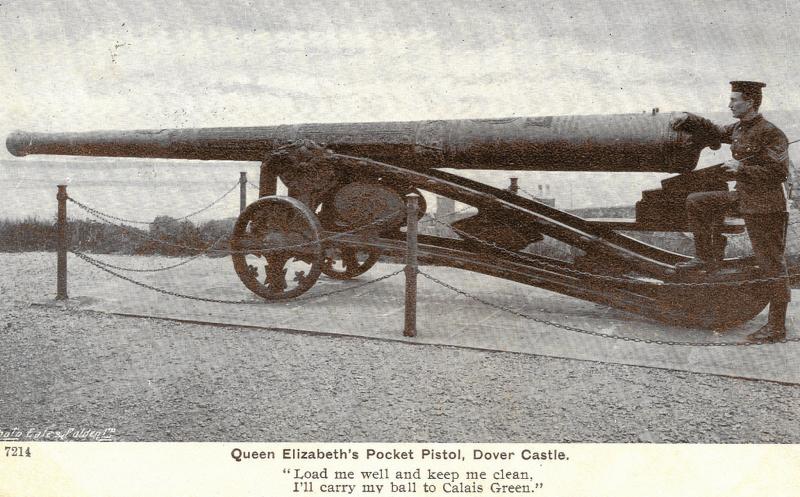One Amazing {of Two} 17th Century Iron Cannon Balls From 'Queen Elizabeth's Pistol', A 24 Foot Long Basilisk Cannon. The Cannon Balls Were Found in the 19th Century. A Fabulous Relic From 'The Siege of Hull' During the English Civil War
'Queen Elizabeth's Pistol', was the Tudor nickname of a fabulous cannon presented to Queen Elizabeth's father King Henry the VIIIth. In the English Civil war it was called 'the great Basilisco of Dover' and it was used in the English Civil war, first by the Parliamentarian artillery train forces of the Earl of Essex, it was captured, at Lostwithiel in August 1644, then used by the King's Artillery train, and then retaken by the Parliamentarian forces.
The basilisk got its name from the mythological basilisk: a fire-breathing venomous serpent that could cause large-scale destruction and kill its victims with its glance alone. It was thought that the very sight of it would be enough to scare the enemy to death
The cannon balls were recovered from the besieged area of Hull, and sold at auction in the 19th century, and since then, they have been in the same family's ownership. We are selling them separately, and priced individually.
The 24 foot long bronze cannon was cast in 1544 by Jan Tolhuys in Utrecht. It is thought to have been presented to Henry VIII by Maximiliaan van Egmond, Count of Buren and Stadtholder of Friesland as a gift for his young daughter Elizabeth and is known to have been referred to as Queen Elizabeth's Pocket Pistol by an article in the Gentleman's Magazine from 1767. The cannon is thought to have been used during the English Civil War, described as 'the great Basilisco of Dover' amongst other ordnance captured by Royalist forces from the Earl of Essex in Cornwall in 1644, later used at the siege of Hull and recaptured by Parliamentarians. The barrel is decorated in relief with fruit, flowers, grotesques, and figures symbolizing Liberty, Victory and Fame. The gun carriage was commissioned by the Duke of Wellington in the 1820s, when it was then known as Queen Anne's gun, cast from French guns captured at Waterloo.
Maximilian van Egmont, Count of Buren, Stadtholder of Friesland, 1509-1548, was a distinguished military commander in the service of the Emperor. He was on terms of friendship with Henry VIII and commanded the Imperial contingent at the Siege of Boulogne in 1544. The gun may have been installed at Dover as soon as it was received in England. In the inventory of the Royal possessions drawn up after the King's death in 1547 "the Ordynance and Munycions of Warre......which were in the black bulworke at the peire of Dover....included Basillisches of brasse .....oone Basillisches shotte ......Cl ti"
A popular rendering of the inscription on the gun was 'Load me well and keep me clean, I'll send a ball to Calais Green'. A footnote in the 1916 inventory suggests that this is a doubtful boast since ' Calais Green' was a part of Dover. There appears, however, to be no basis for this statement.
We show in the gallery two of the Basilisk cannon balls recovered outside the curtain wall of Pontefract Castle
Pontefract Castle sits on the edge of the medieval market town. Conservation work is being undertaken with the ambition of making Pontefract a key heritage destination within West Yorkshire. The £3.5m Heritage Lottery funded project is known as the Key to the North, after the title bestowed upon the castle by Edward I. During the project, workmen at the castle recovered seven cannonballs from a section of the castle’s curtain wall.
This cannon ball {a pair to our other one} was acquired from an auction, of recovered Civil War relics from the Siege of Hull, that was held in Hull in the early Victorian period, and acquired from the buyers directly descended family, by us, very recently.
The basilisk was a very heavy bronze cannon employed during the Late Middle Ages. The barrel of a basilisk could weigh up to 4,000 lb (1,800 kg) and could have a calibre of up to 5 inches (13 cm). On average they were around 10 feet long, though some, like Queen Elizabeth's Pocket Pistol, were almost three times that length.
The basilisk got its name from the mythological basilisk: a fire-breathing venomous serpent that could cause large-scale destruction and kill its victims with its glance alone. It was thought that the very sight of it would be enough to scare the enemy to death
The Basilisk cannon used in the Civil War was a most specific calibre of almost 5 inches, and fired this distinct size of round shot cannon ball munition of just over 4 1/2 inch diameter
We also show in the gallery a photograph of 'Queen Elizabeth's Pistol'. in Dover Castle, with a stack of the very same sized cannon balls.
The ball is very surface russetted, but still spherical and very good for its age,
Every single item from The Lanes Armoury is accompanied by our unique Certificate of Authenticity. Part of our continued dedication to maintain the standards forged by us over the past 100 years of our family’s trading
Code: 25075
695.00 GBP

